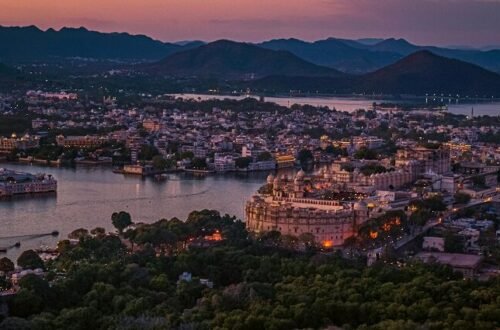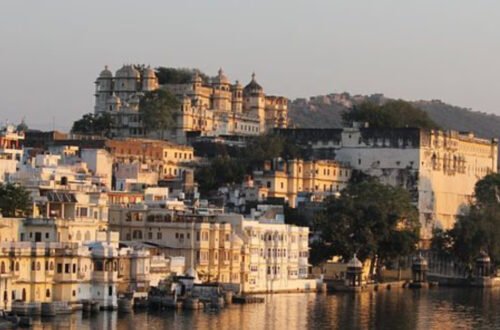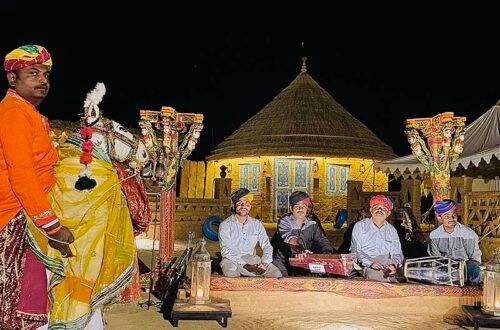Nestled in the heart of the Thar Desert, Jaisalmer is more than golden dunes and sandstone forts—it is a repository of ancient myths, oral traditions, and forgotten stories. These whispers of the desert, passed down through generations, shape the cultural and spiritual identity of the city. Understanding these legends offers a deeper connection to Jaisalmer’s heritage and helps decode the silent language of its dunes, temples, and ruins.
The Legend of Rawal Jaisal and the Golden Fort
The founding myth of Jaisalmer begins with Rawal Jaisal, a Bhati Rajput chieftain, who established the city in 1156 CE. According to local lore, the site of the fort was chosen upon the advice of a wise sage, Eesul. The sage warned Rawal Jaisal that building his capital there would make it powerful but also attract many battles. The Jaisalmer Fort, now a UNESCO World Heritage Site, was thus built on Trikuta Hill and has since withstood centuries of invasions and climatic challenges. This legend is integral to understanding why the fort is not merely an architectural marvel but a spiritual and strategic choice rooted in prophecy.
Spirits of the Desert: The Tale of Tanot Mata
One of the most revered deities in this region, Tanot Mata, is believed to be a divine protector of soldiers and civilians alike. During the Indo-Pakistani War of 1965, it is said that despite heavy shelling near the Tanot Mata temple, not a single shell exploded inside the shrine. This has elevated the temple into a site of mythological importance, and many believe it to be shielded by a divine force. The temple lies near the Indo-Pak border and serves not only as a spiritual site but also as a living testament to the intersection of faith and folklore in modern times.
Haunted Havelis: Curses of the Merchant Mansions
Jaisalmer is dotted with ornately carved havelis once owned by wealthy merchants. Among them, Kuldhara Village stands out for its eerie silence and abandoned streets. Legend says that the entire village of Paliwal Brahmins vanished overnight in the 19th century, leaving behind only architectural remnants. Locals whisper of a curse placed by the villagers to prevent any future settlement. Although historical reasons such as water scarcity may explain the abandonment, the story persists as one of Rajasthan’s most chilling folktales.
The Snake Charmer’s Curse and the Desert Wind
The Thar’s natural elements are also wrapped in mythology. One lesser-known tale involves a snake charmer who was wronged by a local ruler. Before leaving the city, he is believed to have cursed the winds of Jaisalmer to always carry sand and sorrow. This story is often cited by elders when explaining sudden sandstorms or seasonal changes in wind direction. While scientifically attributed to the desert’s unique climatic behavior, the legend serves as a cultural explanation passed down in rural households.
Rajput Valor and the Legend of Sati
Jaisalmer’s history is also steeped in tales of Rajput honor and sacrifice. The most emotionally resonant are stories of Jauhar—mass self-immolation carried out by Rajput women to avoid capture during enemy invasions. These acts were often accompanied by the playing of war drums, and it’s said that on certain nights, drumbeats can still be heard near old fort walls—believed by some to be echoes from the past. These narratives continue to influence traditional songs, puppet shows, and folk performances held near the Desert Camp in Jaisalmer, keeping the emotional memory of valor alive.
The Camel Whisperers and the Silent Code of the Sands
Camel herders, known as Raikas or Rabaris, often speak of a “code” passed on by the desert itself. They believe that the camels understand subtle changes in the wind and terrain better than any compass. Folk legends say that camels were once messengers between gods and humans, carrying sacred stories written in the sands. These beliefs still influence local practices and rituals, especially among those offering desert tours and camel safaris. Spending a night in a Luxury Tent in Jaisalmer often involves hearing such stories from local guides, adding depth to the desert experience.
Jaisalmer’s Mythical Geography: Dunes, Lakes, and Caves
Each landscape feature in Jaisalmer has a story. The Sam Sand Dunes, apart from being a tourist attraction, are believed to be sites of ancient celestial events. Gadisar Lake, built by Maharaja Gadsi Singh, is surrounded by shrines and believed to be blessed with water by the gods. Even small caves and rock formations are often named after sages or mythic creatures. These natural sites aren’t just scenic—they are revered and narrated through centuries-old oral traditions, anchoring them in both geography and mythology.
Conclusion: Why Myths Matter in Jaisalmer
Myths are not just stories; in Jaisalmer, they function as invisible threads that tie history, geography, and identity into one cohesive narrative. They shape tourism, define rituals, and inform even architectural styles. Understanding these tales is key to appreciating the full depth of Jaisalmer’s cultural landscape.
When walking through the fort, camping under the stars, or watching a traditional Manganiyar performance, one is not merely witnessing entertainment—but engaging with a legacy passed through generations. The whispers of the Thar are subtle but profound, waiting to be heard by those who listen closely.





